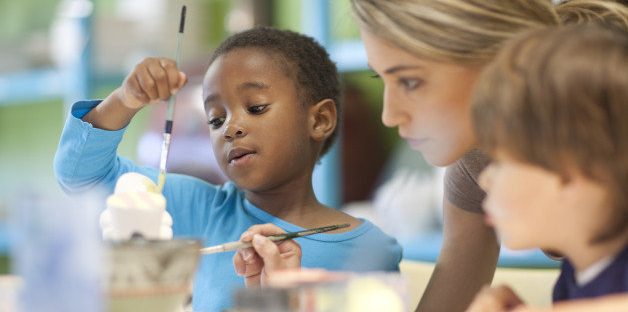Here we are heading into another school year, and, once again, communities all across America are struggling with funding cutbacks that affect teachers, school programs and school facilities. Much like marketing is the first department to be cut back when a business has to downsize, the arts-education departments are the first to lose funding when schools are in trouble. This is evident just by looking at the history of our government’s National Endowment for the Arts program; in 1992, we were funding it at $176 million a year, and now it’s only $146 million. Contrary to what many of our political leaders think, the arts in school are essential to creating the innovative workforce of tomorrow.
Arts education is one way to help develop critical and creative thinking, according to PBS. For instance, music education may improve skills like reading, writing and foreign language learning, because it trains auditory skills. It takes discipline to learn to play an instrument, which increases concentration skills. Making music involves more than the voice or fingers—a child taps into multiple skillsets using their ears and eyes, as well as small and large muscles. Music also helps kids visualize various elements that should go together, much like the thinking they would use in solving a math problem. Solving these multistep problems prepares children for careers in architecture, engineering and technology.
A study at the University of Kansas showed elementary schools that had superior music-education programs scored 22% higher in English and 20% higher in math on standardized tests, compared to schools with low-quality music programs. Theater participation where students recreate stories may strengthen memory and verbal skills, and, because it involves roleplaying with others, may help in understanding the viewpoints of others in real life. Creating art and […] visiting museums [both] boost analytical thinking by teaching students to notice details in paintings, which may help train them to consider details in their future.
Research by the NEA found that at-risk students who have access to the arts show better academic results, [have] better workforce opportunities and [demonstrate] more civic engagement. They found that low socioeconomic status (SES) students who had a history of arts involvement in the eighth grade were more likely to have plans to earn a college education. […] These SES eighth-graders were nearly 30% more likely to read a newspaper and volunteered at a rate of […] 20% [more] than that of the other students.
In […] Arizona, a model program by the Tucson Unified School District known as Opening Minds Through the Arts (OMA) was inspired by the ongoing research into brain development and music. [The] program […] integrates arts education with core curriculum from Kindergarten through eighth grade. OMA uses instrumental music, opera, dance, theater and visual arts to help teach reading, writing, math and science. Each school has an Arts Integration Specialist and a team of seven artists working alongside classroom teachers, adapting each lesson to support teaching of core content and knowledge. In addition, the children learn to play the recorder, violin, a wind instrument and keyboard. The OMA program employs 26 artists from the Tucson Symphony Orchestra, Arizona Opera Company and [the] University of Arizona’s School of Music who teach 30-minute twice-weekly classes for 36 weeks of the school year. The quality of this program and the documented student achievement results [have] gained national recognition from the U.S. Department of Education, Harvard Project Zero and the Arts Education Partnership.
Innovation is needed in today’s competitive workforce. Innovation relies on a broad mix of skills [and] several types of people, [primarily] scientists, developers [and] entrepreneurs. Skills by job group obviously are different, but certain skillsets overlap most innovative jobs. Technical skills need content and procedural knowledge, thinking and creative skills question ideas and find solutions to problems, and social and behavioral skills involve communication, collaboration and persistence. These jobs all need a skillset that pulls in knowledge from several different experiences. Having kids exposed to music, drama, dance, choir, [the] performing arts, literary arts, media arts and visual arts starts them on the path to innovative thinking.
We know most school districts have arts on the back burner. What can adults passionate about the arts do to help? If you love the arts, you can volunteer in the schools sharing your enthusiasm for music, performing arts or the visual arts. If you don’t have the time to volunteer, there are several organizations that will take your donations to help students. The Afterschool Alliance enriches kids when school is over. The Scholastic Art & Writing program encourages students on a local level [by holding] exhibitions of [their] work. Americans for the Arts works on advancing the arts and art education. The Arts Integration Solutions’ mission is to transform the education system by bringing the classroom practice of arts integration to every child. […]
Arts education matters. People exposed to the arts play a significant role in the continued innovation of the United States. The arts are an essential part of our heritage and vital in what makes us human and separates us from other creatures. Our lives are infused with the arts as we listen to music, watch TV dramas and comedies, read fiction, attend museums [and] theaters, and watch the dance of “The Nutcracker.” Our lives and our children’s lives would truly be empty without the arts.
Original article here: http://www.huffingtonpost.com/marc-joseph/has-america-given-up-on-a_b_7860710.html
